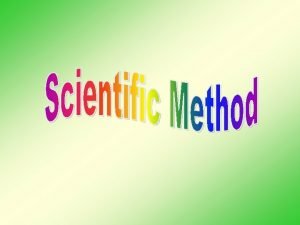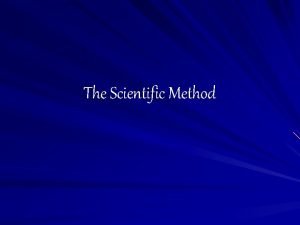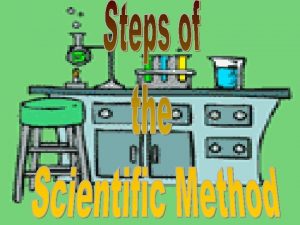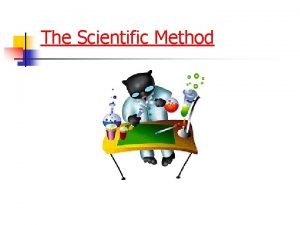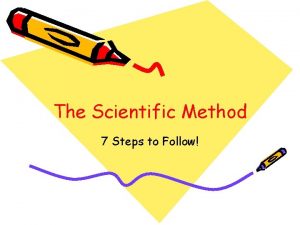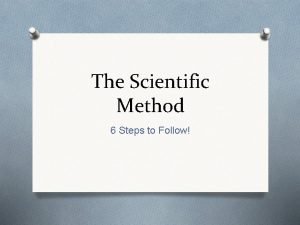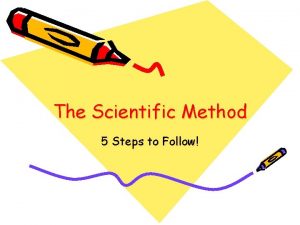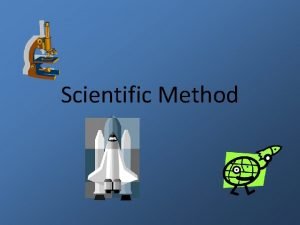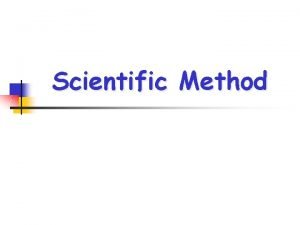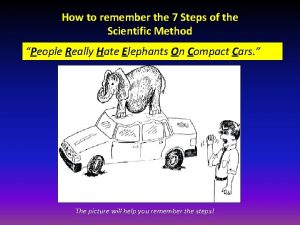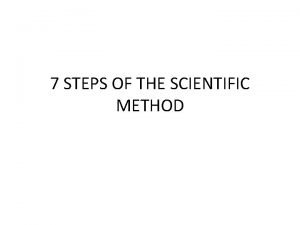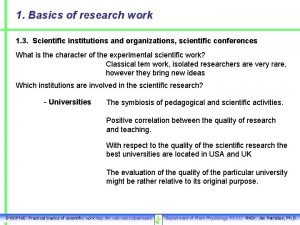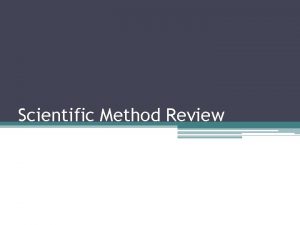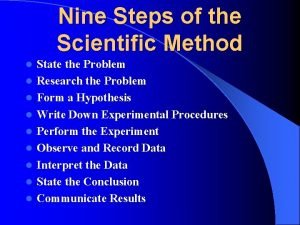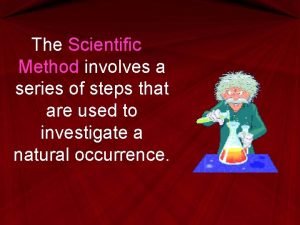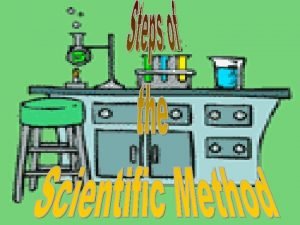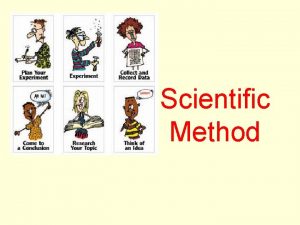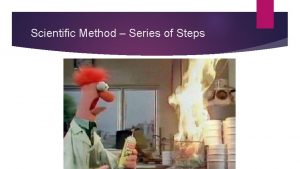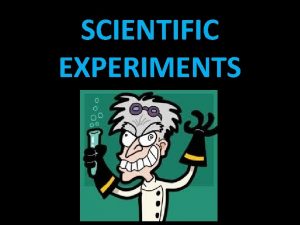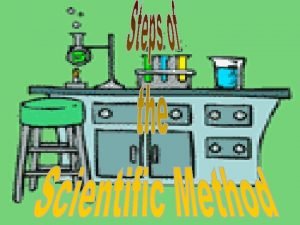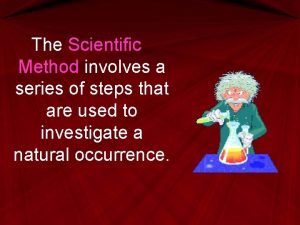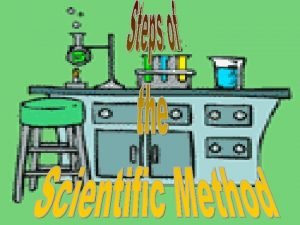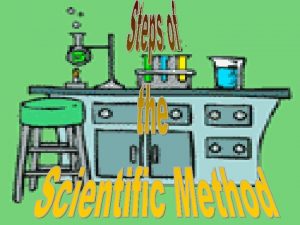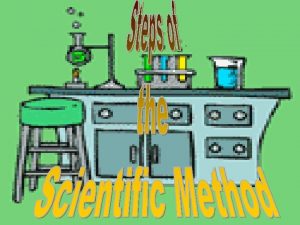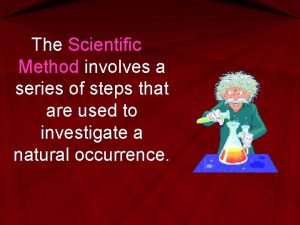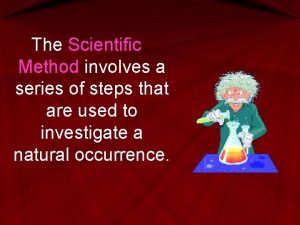The Scientific Method involves a series of steps



















- Slides: 19


The Scientific Method involves a series of steps that are used to investigate a natural occurrence.

Problem/Question Observation/Research Formulate a Hypothesis Experiment Collect and Analyze Results Conclusion Repeat

Steps of the Scientific Method 1. Problem/Question: Problem/Question Develop a question or problem that can be solved through experimentation.

Steps of the Scientific Method 2. Observation/Research: Observation/Research Make observations and research your topic of interest.

Steps of the Scientific Method 3. Formulate a Hypothesis: Hypothesis (Educated Guess) Predict a possible answer to the problem or question. Example: If soil temperatures rise, then plant growth will increase.

Steps of the Scientific Method 4. Experiment: Experiment Develop and follow a procedure. Include a detailed materials list. The outcome must be measurable (quantifiable).

Steps of the Scientific Method 5. Collect and Analyze Results: Results Modify the procedure if needed. Confirm the results by retesting. Include tables, graphs, and photographs.

Steps of the Scientific Method 6. Conclusion: Conclusion Include a statement that accepts or rejects the hypothesis and why. Refer to your data in your explanation.

Steps of the Scientific Method 7. Repeat Experiment

Results and Data • **** If your results DO NOT fit your Hypothesis DO NOT CHANGE YOUR DATA. Change your hypothesis and retry your experiment.

Think you can name all seven steps? Collect Formulate Communicate Observation/Research Problem/Question and Experiment Conclusion Analyze a Hypothesis the Results

Hypothesis The hypothesis is an educated guess about the relationship between the independent and dependent variables. Note: Hypothesis are written as “If” “Then” Statements

Independent Variable The independent, or manipulated variable, is the variable that can be controlled by the experimenter. It usually includes time (dates, minutes, hours), depth (feet, meters), temperature (Celsius).

Dependent Variable • The dependent, or responding variable, is the variable that is directly affected by the independent variable. It is the result of what happens because of the independent variable. • Example: How many oxygen bubbles are produced by a plant located five meters below the surface of the water? The oxygen bubbles are dependent on the depth of the water.

Graphing • When graphing your data from an experiment always place the independent variable on the X axis (horizontal) and the dependent on the Y axis (vertical).

Valid Experiment • In order for a scientific experiment to be valid it can only have 1 variable. • This variable is the part that is being tested. • All other parts of the experiment must remain the same or constant • Any experiment that has more then 1 variable cannot prove anything and therefore is invalid

Control Group In a scientific experiment, the control is the group that serves as the standard of comparison. • The control group is exposed to the same conditions as the experimental group, except for the variable being tested. • All experiments must have a control group. •

Constants The constants in an experiment are all the factors that the experimenter attempts to keep the same.
 Involves a series of steps
Involves a series of steps Scientific method involves
Scientific method involves The first step in the scientific method involves
The first step in the scientific method involves The scientific method involves
The scientific method involves Scientific inquiry vs scientific method
Scientific inquiry vs scientific method 7 steps of the scientific method
7 steps of the scientific method 7 steps of the scientific method
7 steps of the scientific method Scientific method 7 steps
Scientific method 7 steps What are the 6 steps in the scientific method
What are the 6 steps in the scientific method The five steps of the scientific method
The five steps of the scientific method Variables and controls
Variables and controls Scientific method steps
Scientific method steps Scientific method steps
Scientific method steps People really hate elephants on compact cars
People really hate elephants on compact cars 7 steps in the scientific method
7 steps in the scientific method Steps of scientific method
Steps of scientific method What are the six steps of the scientific method
What are the six steps of the scientific method What are the nine steps of the scientific method
What are the nine steps of the scientific method Scientific method steps
Scientific method steps Scientific method steps
Scientific method steps
